Edie Melson's Blog, page 201
May 7, 2020
Writing Lessons through the Lens of a Camera
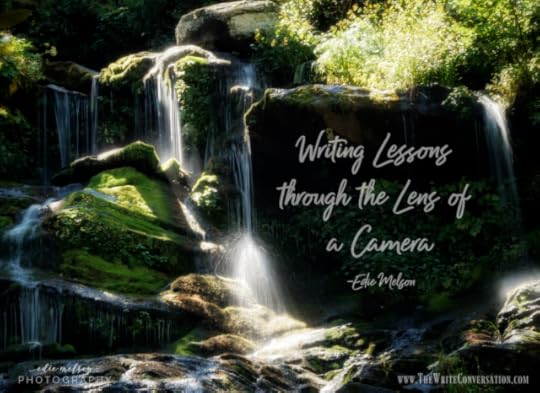
by Edie Melson @EdieMelson
I spend a lot of time with my husband, Kirk, hiking in the Blue Ridge Mountains and I always bring my camera. I’m constantly amazed when I get home and see the pictures on a bigger screen at the way the images turn out.
One day, as I was sorting images, I was struck by the parallel between this and writing. But I never know for sure until I’m back home. I just can't get the perspective I need to judge a photo in the tiny view window of my camera.
Even when I get home and can see the images on my big computer screen, I still don't know how an image will be received by others—no matter how much I love it.
This is exactly like following God's call to write.
Each manuscript—large or small—is in a way, a battle. I sit at my computer scope out the viewpoints, clamber over obstacles—like doubt, fear, and time—and plan what I’ll write. I sit and write, hoping that what I create is worthwhile, but never knowing until I’m finished. Then I can view it as a whole—like looking at my photographs on a larger screen.
Then I have to go one step further with my writing. I have to put it out there for others to read. Sometimes it's my critique group, at other times it's my agent or a publisher. But I never know how God is going to use my writing (or my photography) until I'm willing send it off for others to see.
TWEETABLEWriting Lessons through the Lens of a Camera - @EdieMelson (Click to Tweet)
*NOTE: if you enjoyed this essay, I post regular devotions—paired with pictures I've taken—about life and faith on my Instagram account, @Stop2Pray and on my professional Facebook page, Edie Melson.
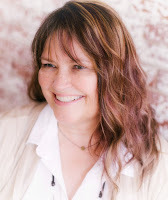 Edie Melson is a woman of faith with ink-stained fingers observing life through the lens of her camera. No matter whether she’s talking to writers, entrepreneurs, or readers, her first advice is always “Find your voice, live your story.” As an author, blogger, and speaker she’s encouraged and challenged audiences across the country and around the world. Her numerous books reflect her passion to help others develop the strength of their God-given gifts and apply them to their lives.Connect with her on her website, through Facebook, Twitter and on Instagram.
Edie Melson is a woman of faith with ink-stained fingers observing life through the lens of her camera. No matter whether she’s talking to writers, entrepreneurs, or readers, her first advice is always “Find your voice, live your story.” As an author, blogger, and speaker she’s encouraged and challenged audiences across the country and around the world. Her numerous books reflect her passion to help others develop the strength of their God-given gifts and apply them to their lives.Connect with her on her website, through Facebook, Twitter and on Instagram.
Published on May 07, 2020 22:00
May 6, 2020
The Art & Peace of CREATING
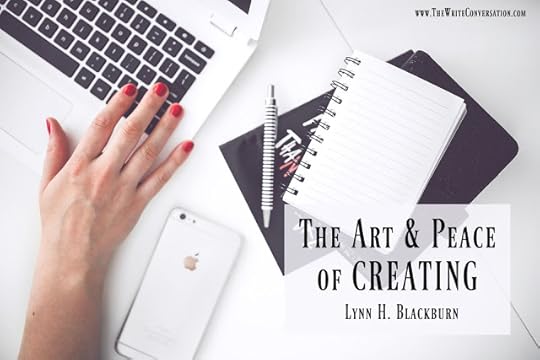
by Lynn H. Blackburn @LynnHBlackburn
I made some new friends last week.
And by that, I mean I literally made some new friends. I decided they needed to exist and so I created them. I thought about them until I had an idea of who they are. I gave them names, temperaments, hair color (one of them’s a ginger!) and eye color, backstories, siblings, jobs that they love, reasons they haven’t found love . . . yet, and then I threw them into a dangerous situation.
I’m not a plotter and I have no idea what happens next, but I’m already intrigued by who they are and by how they seemed to want to exist and how now that they do, I can’t imagine how they ever didn’t before.
This is the part where some people, usually people who aren’t writers, get a little worried about my mental health.But my writer friends will be quick to quote Luna Lovegood (from Harry Potter, but you already knew that, right?) and assure me that I’m just as sane as they are.
This may seem weird or nonsensical to some of you, especially those of you who are nonfiction writers, but for me it’s been a desperately needed lungful of creative air. In the midst of so much that is not right in the world, when there is so much I cannot do, this is something I can do.
It’s also left me even more in awe of my Creator.
I have to wonder if part of the thrill of creating new characters is a shadow image on my soul leftover from the way God felt when He decided that I needed to exist.
He gave me a name and a temperament, blonde hair that turned brown (and now is running full speed to gray), and blue eyes. He considered the exact time in history that I would live out my days and decided on what family I should be born into to give me the right mix of love and drama that would lead me straight back to Him.
It’s humbling to consider that the God of the Universe went to the trouble to decide that the world needed someone as uniquely me as me. And He decided the world needed someone as quirky and fabulous as you, too!
It’s incredibly comforting to rest in the knowledge that no matter how much it feels like the world is spinning out of control, the Truth is that He’s still writing our story, and thankfully for us, God isn’t winging it. He’s not waking up every morning wondering what will happen today. The Author and Finisher knows exactly what happens next, and He hasn’t dropped the ball, lost His train of thought, or gotten lost down a rabbit trail.
As the plot twist we’re currently living in continues to spin and spiral, my prayer for all of us is that we will be comforted by the extraordinary grace that is ours as beloved creations. That we will rest in the knowledge that we don’t have to have it all figured out, because He’s gone before us into every confusing bit of our story, and He’s already written a happily ever after that is beyond our wildest dreams.
Grace and peace,

TWEETABLEThe Art and Peace of CREATING for Writers - @LynnHBlackburn on @EdieMelson (Click to Tweet)
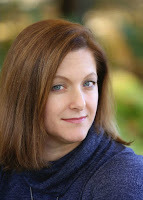 Lynn H. Blackburn believes in the power of stories, especially those that remind us that true love exists, a gift from the Truest Love.
Lynn H. Blackburn believes in the power of stories, especially those that remind us that true love exists, a gift from the Truest Love.Her Dive Team Investigations series kicked off in March of 2018 with Beneath the Surface. The second book in the series, In Too Deep, released in November of 2018. The last book in the series, One Final Breath, released in September 2019. Her first book, Covert Justice, won the 2016 Selah Award for Mystery and Suspense and the 2016 Carol Award for Short Novel. Her second book, Hidden Legacy, released in June 2017.
Published on May 06, 2020 22:00
May 5, 2020
Pantsters vs Plotters – What's the Difference in Writing?
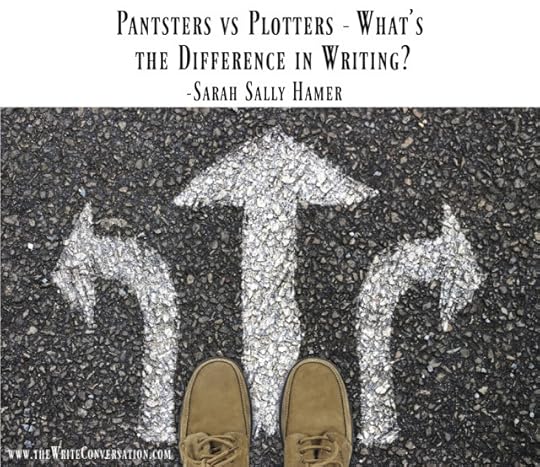
by Sarah Sally Hamer @SarahSallyHamer
Which kind of writing are you? A pantster or a plotter? Why does it matter?An explanation of the difference may help:A full-blown plotter creates a plan of action before any writing takes place. Some are almost OCD about it, plotting out each scene in the story from beginning to end. This type of writer will know loads about a character (goals, motivations, conflicts, character arcs, traits, etc.) before the first sentence is written. Where plot points fall and discussions of the Three Act, Eight Scene structure consume these people. They know exactly where the story is going and have trouble deviating.
Pantsters, on the other hand, may have absolutely no idea what they're going to write when they sit down. They allow the story—and characters--to guide them and don't worry about a rabbit trail or two. Or three. Or even four. The story will tell itself.
I'm describing the two extremes, of course, because most people fall in between them. But it's good to have an idea of the benefits of both aspects of that polarity.
Plotter benefits:A good solid understanding of the story before it startsLess time wandering around and chasing ideasCan help when under contract, since many books are sold on synopses
Plotter disadvantages:Once the story is "written", even in a short version, it can be boring to "write it again."Harder to make a plot change as the story is written, since it's already plottedToo much structure can stifle creativity
Pantster benefits:What a great time to let my imagination fly!Twists and turns and surprises are so much fun!I can change the story at any time and make it so much better!
Pantster disadvantages:Ooh! I like that new character better than the one I had before!What do you mean I have a deadline? But I like that plot twist! Of course it fits!
(Can you believe how different my two "voices" are? I didn't do it on purpose – the pantster in me just took over!)
I am both a pantster AND a plotter, because both sides of the equation are equally important. They're like tools in a toolbox. When I need to hang a picture, a hammer works better to drive a nail in the wall. And, when I change out a light switch, a screwdriver is the correct tool, not a hammer. Same with how we put a story together. When I need to imagine a story, I often let my fingers dance on the keyboard until a character I can work with emerges. Sometimes, it takes a few pages, sometimes a few chapters, but eventually, the story is born and I have a good grasp of what I want to say.
The plotter steps in here, at least long enough to get everything in order. I'll work out some of the details: GMC, traits, arc, at least five plot points, and then let the pantster back in the room.
My pantster side loves to play with ideas and images and descriptions. I let that happen as I pour the colors of imagination onto the page. The swirls of emotion, the vortices of deep thought, the maelstroms of conflict, all begin to connect, and to attach to the structure my plotter has devised.
Eventually, it all comes together, using the advantages of both sides of the spectrum, and a story is created.
Bottom line: Don't let either style of writing control you. You, the writer, are in charge of how you write. Using your strengths can give you the best of both worlds.
Which do you consider your strength? Plotting or Pantstering?
TWEETABLEPantsters vs Plotters – What's the Difference in Writing? @SarahSallyHamer on @EdieMelson (Click to Tweet)
 Sarah (Sally) Hamer is a lover of books, a teacher of writers, and a believer in a good story. Most of all, she is eternally fascinated by people and how they 'tick'. She’s passionate about helping people tell their own stories, whether through fiction or through memoir. Writing in many genres - mystery, science fiction, fantasy, romance, medieval history, non-fiction – she has won awards at both local and national levels, including two Golden Heart finals.
Sarah (Sally) Hamer is a lover of books, a teacher of writers, and a believer in a good story. Most of all, she is eternally fascinated by people and how they 'tick'. She’s passionate about helping people tell their own stories, whether through fiction or through memoir. Writing in many genres - mystery, science fiction, fantasy, romance, medieval history, non-fiction – she has won awards at both local and national levels, including two Golden Heart finals.A teacher of memoir, beginning and advanced creative fiction writing, and screenwriting at Louisiana State University in Shreveport for almost twenty years, she also teaches online for Margie Lawson at www.margielawson.com. Sally is a free-lance editor and book coach at Touch Not the Cat Books, with many of her students and clients becoming successful, award-winning authors.
You can find her at hamerse@bellsouth.net or www.sallyhamer.blogspot.com
I wish to express gratitude to the giants whose shoulders I stand on and who taught me so much about the writing craft. I would list every one, if it were only possible.
Published on May 05, 2020 22:00
May 4, 2020
Writer’s Block Or Submission Block?
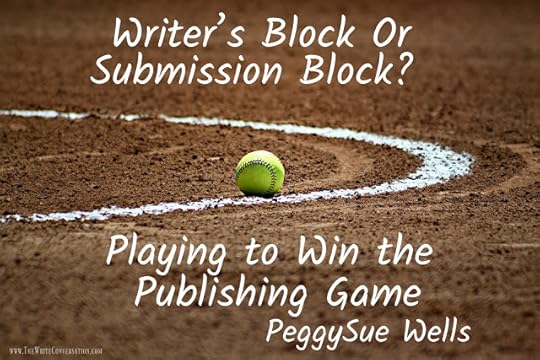
by PeggySue Wells @PeggySueWells
Playing to Win the Publishing Game
There are two types of writers. Those that submit for publication and those that don’t. In the writing industry, the difference between players and spectators is frequently determined by who takes the next step.
“A professional writer doesn’t wait for inspiration any more than a professional plumber waits for inspiration to lay a pipe.” After spending his first forty years as a Texas cowboy, John Erickson is the author of 60 some Hank the Cowdogbooks. “A professional plumber knows some principles like you don’t lay a pipe uphill or in frozen ground, but he lays that pipe. Professional writers write. I write four hours a day, seven days a week because I’m fanatical about that because that’s what I do.”
Batter Up
Are your projects stuffed in a drawer, or stored on computer files? Submission block is like a batter that refuses to swing. Opportunities wing past.
What are you afraid of? Rejection? Success? Both? Taking action that will change the status quo of your life? Is the dream of one day being a published author greater than your courage to go after it?
Even a rejection proves you are in the game. A participant rather than a spectator. A “no, thank you,” is not calling your baby ugly. It is a step closer to connecting with the agent or publisher that shares your passion for the project. It is valuable feedback. Behind a “no” is generally three plays. The piece does not fit with the purpose of the publisher. For instance, a publisher of non-fiction books is not interested in novels. There are similar projects already available or in process. The writing needs improvement.
A homerun response is an enthusiastic yes followed by that favorite call, “Check enclosed.”
Get in the Game
If submission block is keeping you out of the publishing game, here are moves to get you playing:Accountability. Tell someone you will submit on or before a specific date. Submit your best work knowing it may not be perfect. Approach an editor as an eager team player. Be coachable.Like athletes, writers improve with practice. Every time you submit, you take a swing at the ball.
Betcha’ a cold ballpark hot dog and warm soda that your publishing home run average improves when you submit your work.
TWEETABLEWriter’s Block Or Submission Block? @PeggySueWells on @EdieMelson (Click to Tweet)
 Tropical island votary and history buff, PeggySue Wells parasails, skydives, snorkels, scuba dives, and has taken (but not passed) pilot training. Writing from the 100-Acre wood in Indiana, Wells is the bestselling author of twenty-eight books including The Slave Across the Street, Slavery in the Land of the Free, Bonding With Your Child Through Boundaries, Homeless for the Holidays, and Chasing Sunrise. Optimistic dream-driver, PeggySue is named for the Buddy Holly song with the great drumbeat. At school author visits, she teaches students the secrets to writing, and speaks at events and conferences. Connect with her at www.PeggySueWells.com, on Facebook at PeggySue Wells, and Twitter @PeggySueWells.
Tropical island votary and history buff, PeggySue Wells parasails, skydives, snorkels, scuba dives, and has taken (but not passed) pilot training. Writing from the 100-Acre wood in Indiana, Wells is the bestselling author of twenty-eight books including The Slave Across the Street, Slavery in the Land of the Free, Bonding With Your Child Through Boundaries, Homeless for the Holidays, and Chasing Sunrise. Optimistic dream-driver, PeggySue is named for the Buddy Holly song with the great drumbeat. At school author visits, she teaches students the secrets to writing, and speaks at events and conferences. Connect with her at www.PeggySueWells.com, on Facebook at PeggySue Wells, and Twitter @PeggySueWells.
Published on May 04, 2020 22:00
May 3, 2020
Lynette Eason's Aspiring Romantic-suspense Network
Edie here. Lynette is a very close friend of mine, but beyond that she's a genius when it comes to mentoring others in the world of writing. So when she told me about this program she was starting, I insisted she write me a post so I could share the opportunity with you all!
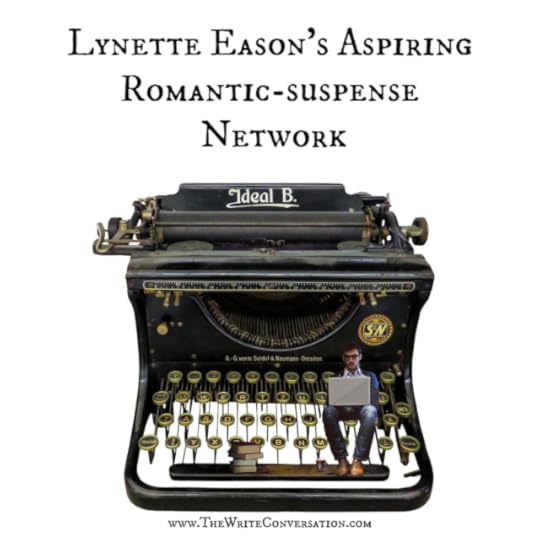
by Lynette Eason @LynetteEason
Hi Friends, thanks for letting me stop in today and share something I’m kind of excited about. I’ve been thinking long and hard about developing a program that helps writers grow in the craft of writing romantic suspense. As you know, no matter where you are on your journey to publication, writing is HARD. It can often be lonely. And, often, you just don’t know what you don’t know. As a result, I’ve developed the LEARN Program.
Lynette Eason’s Aspiring Romantic-suspense Network (My hubby came up with that and I liked it! J)Here’s the pitch:
Are you an aspiring writer of romantic suspense who’s been working toward publication for a while now? Are you interested in writing category romantic suspense? Have you received a few rejections and don’t understand why? Are you targeting a certain publishing house? Are you an Indie author interested in making sure you’re putting out a well-done story?
I’m happy to say that I’m now offering a 7-month writing intensive that will help move you closer to publication. Please understand that I’m in no way GUARANTEEING publication with a traditional house. I’m not an acquisitions editor, etc, but if you will commit yourself to this course, you will definitely make strides in the right direction. If your genre is not Romantic Suspense, I can still help you, (the story elements are either there or they aren’t) however, keep in mind that my expertise is in the Romantic Suspense/thriller arena.
Here are just a few of the benefits you’ll receive throughout the course.A contract signed by both parties to protect your investment as well as mine.Monthly one-hour TEAM meeting (for anyone who is interested and currently enrolled in the course) for Q & A and encouragement as well as a publishing topic that is relevant to publisher-worthy writing.Monthly one hour zoom sessions with one on one coaching and check-inDaily email access with prompt responses from me for questions along the way between the interactive sessions. (Yes, you can email me daily if you need to, but no more than two a day, please.)Synopsis review (multiple times) and chapter by chapter feedback on your manuscript.A final in-depth review/developmental edit of manuscript before submission.
What it IS:
It is mentoring and coaching process with Lynette Eason to LEARN how to write category romantic suspense and the elements necessary for an effective storyline.There will be monthly WORD COUNT deadlines. I understand life happens, but the deadlines are there for a reason. You may complete your manuscript early, but I will not be able to work ahead with you.-f you stop working or find yourself unable to complete the course in the time allotted, there are NO refunds. However, you will have up to a year from date of signup to finish and will accept that my schedule may not permit immediate or daily feedback, etc. Although, know that I will do my best to respond in a timely manner in order to allow you to finish before the year is up.
Pre-requisites:
This is not a class on writing per se. I’m assuming that you already know how to write. For example, you should already have a good grasp of the basics of plot, point of view, characterization, deep point of view, backstory, grammar, punctuation, etc., however, I will be pointing out how to improve and build on what you’re already doing, so there will be some teaching involved.This is not necessarily a program for a beginning writer. It’s pretty fast-paced and intense.You should have a story in progress.You should have read at least 10 books in the line you are targeting.
If this sounds like something you’re interested in, feel free to email me at learnwithlynette@gmail.com. I’d love to answer any questions you might have.
Have a blessed Day!
TWEETABLE
Lynette Eason's Aspiring Romantic-suspense Network - @LynetteEason on @EdieMelson (Click to Tweet)
 Lynette Eason writes for Revell, a division of Baker Publishing Group. Her books have appeared on the CBA, ECPA, and Publisher’s Weekly bestseller lists. In 2016, Lynette placed in the top ten in the James Patterson co-writers contest. She has won the Carol Award, the IRCC award, the Selah, Killer Nashville’s Reader’s Choice Award, the Christian Retailing's Best Award and more. Lynette’s novel, Her Stolen Past, was made into a Lifetime Movie Network movie which aired in February 2018.
Lynette Eason writes for Revell, a division of Baker Publishing Group. Her books have appeared on the CBA, ECPA, and Publisher’s Weekly bestseller lists. In 2016, Lynette placed in the top ten in the James Patterson co-writers contest. She has won the Carol Award, the IRCC award, the Selah, Killer Nashville’s Reader’s Choice Award, the Christian Retailing's Best Award and more. Lynette’s novel, Her Stolen Past, was made into a Lifetime Movie Network movie which aired in February 2018.
Lynette is a member of ACFW, RWA, MWA, ITW, FHL and KOD.
She can be found at www.lynetteeason.com and www.facebook.com/lynette.eason.

by Lynette Eason @LynetteEason
Hi Friends, thanks for letting me stop in today and share something I’m kind of excited about. I’ve been thinking long and hard about developing a program that helps writers grow in the craft of writing romantic suspense. As you know, no matter where you are on your journey to publication, writing is HARD. It can often be lonely. And, often, you just don’t know what you don’t know. As a result, I’ve developed the LEARN Program.
Lynette Eason’s Aspiring Romantic-suspense Network (My hubby came up with that and I liked it! J)Here’s the pitch:
Are you an aspiring writer of romantic suspense who’s been working toward publication for a while now? Are you interested in writing category romantic suspense? Have you received a few rejections and don’t understand why? Are you targeting a certain publishing house? Are you an Indie author interested in making sure you’re putting out a well-done story?
I’m happy to say that I’m now offering a 7-month writing intensive that will help move you closer to publication. Please understand that I’m in no way GUARANTEEING publication with a traditional house. I’m not an acquisitions editor, etc, but if you will commit yourself to this course, you will definitely make strides in the right direction. If your genre is not Romantic Suspense, I can still help you, (the story elements are either there or they aren’t) however, keep in mind that my expertise is in the Romantic Suspense/thriller arena.
Here are just a few of the benefits you’ll receive throughout the course.A contract signed by both parties to protect your investment as well as mine.Monthly one-hour TEAM meeting (for anyone who is interested and currently enrolled in the course) for Q & A and encouragement as well as a publishing topic that is relevant to publisher-worthy writing.Monthly one hour zoom sessions with one on one coaching and check-inDaily email access with prompt responses from me for questions along the way between the interactive sessions. (Yes, you can email me daily if you need to, but no more than two a day, please.)Synopsis review (multiple times) and chapter by chapter feedback on your manuscript.A final in-depth review/developmental edit of manuscript before submission.
What it IS:
It is mentoring and coaching process with Lynette Eason to LEARN how to write category romantic suspense and the elements necessary for an effective storyline.There will be monthly WORD COUNT deadlines. I understand life happens, but the deadlines are there for a reason. You may complete your manuscript early, but I will not be able to work ahead with you.-f you stop working or find yourself unable to complete the course in the time allotted, there are NO refunds. However, you will have up to a year from date of signup to finish and will accept that my schedule may not permit immediate or daily feedback, etc. Although, know that I will do my best to respond in a timely manner in order to allow you to finish before the year is up.
Pre-requisites:
This is not a class on writing per se. I’m assuming that you already know how to write. For example, you should already have a good grasp of the basics of plot, point of view, characterization, deep point of view, backstory, grammar, punctuation, etc., however, I will be pointing out how to improve and build on what you’re already doing, so there will be some teaching involved.This is not necessarily a program for a beginning writer. It’s pretty fast-paced and intense.You should have a story in progress.You should have read at least 10 books in the line you are targeting.
If this sounds like something you’re interested in, feel free to email me at learnwithlynette@gmail.com. I’d love to answer any questions you might have.
Have a blessed Day!
TWEETABLE
Lynette Eason's Aspiring Romantic-suspense Network - @LynetteEason on @EdieMelson (Click to Tweet)
 Lynette Eason writes for Revell, a division of Baker Publishing Group. Her books have appeared on the CBA, ECPA, and Publisher’s Weekly bestseller lists. In 2016, Lynette placed in the top ten in the James Patterson co-writers contest. She has won the Carol Award, the IRCC award, the Selah, Killer Nashville’s Reader’s Choice Award, the Christian Retailing's Best Award and more. Lynette’s novel, Her Stolen Past, was made into a Lifetime Movie Network movie which aired in February 2018.
Lynette Eason writes for Revell, a division of Baker Publishing Group. Her books have appeared on the CBA, ECPA, and Publisher’s Weekly bestseller lists. In 2016, Lynette placed in the top ten in the James Patterson co-writers contest. She has won the Carol Award, the IRCC award, the Selah, Killer Nashville’s Reader’s Choice Award, the Christian Retailing's Best Award and more. Lynette’s novel, Her Stolen Past, was made into a Lifetime Movie Network movie which aired in February 2018. Lynette is a member of ACFW, RWA, MWA, ITW, FHL and KOD.
She can be found at www.lynetteeason.com and www.facebook.com/lynette.eason.
Published on May 03, 2020 22:00
May 2, 2020
Mordecai, the Purpose Proclaimer
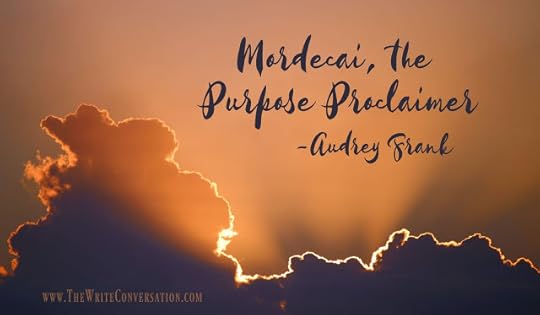
by Audrey Frank @AudreyCFrank
And who knows but that you have come to your royal position for such a time as this? -Mordecai’s challenge to Queen Esther in Esther 4:14
The book of Esther is not only the tale of an orphan-girl-turned-queen who risked her life to save her people. It is also the story of her remarkable uncle Mordecai. Mordecai proved that one brave person bold enough to proclaim purpose in times of uncertainty can change the direction of nations.Our world could sure use brave and bold purpose proclaimers right now as we face global instability. We need people with a broad enough vision to believe that purpose can be borne out of the most unlikely circumstances. That wisdom can arise bringing hope and stability. That God has power greater than our fear.
Mordecai was a purpose proclaimer, and as writers, we can take a few tips from him.
Purpose Out of Unlikely Circumstances
Mordecai inherited a legacy of exile. His great-grandfather was forced out of Jerusalem with the captives in the great exile to Babylon in 597 BC. Mordecai understood loss. He understood the naivety of his young Jewish niece living in a harem in the king’s palace, shielded from the world but with the power to change it. Mordecai understood that our personal history has power to shape our present and future for the better.
We each bring personal history to this particular time in history. What have we learned from our story? What have we learned about who God is? Share it with others. They need to know He can be trusted when everything changes. That freedom comes after exile. That God sets the lonely in families. That purpose often emerges out of the most unlikely circumstances.
Wisdom, Hope, and Stability
After the loss of her parents, Esther lived a sheltered life, cared for and carefully instructed by her uncle Mordecai. One day an officer of the king showed up at their door and suddenly Esther found herself catapulted into a whole new world, living in isolation in the king’s harem as she was groomed for the beauty contest of the ages.
In the end, she was chosen for the starring role in one of the Bible’s most dazzling dream-come-true-fairy-tales, only this was no work of fiction. The story ripples with critical real-world issues, including inequality, racism, misogyny, fear, deception, and decreed destruction. Esther needed wisdom, and Mordecai provided it through his faithful counsel. He was a source of stability to her during a time of national upheaval, and a reliable voice of wisdom and hope.
The noise of the nations is loud today. Many are facing the loss of employment, security, relationships, or health. People are striving to survive the present as they fear the future.
Voices of wisdom, hope, and stability are needed. Writers who themselves draw daily from the quiet waters of God’s Word will have something stable, hopeful, and wise to share with others. This is something we can do when there are so many other things we cannot. We can give as He gives to us.
God has Power Greater than our Fear
Mordecai might have been afraid of the issues of his day, but he did not act like it. He sat at the king’s gate and listened. He learned. He relied upon God’s leading to know when to speak and when to be silent. He trusted God’s power was greater than his fear or the fear his words would strike in Esther’s heart when he boldly challenged her to risk her life for the Jewish people.
To trust God past our fears and to urge others we love to do the same at peril of death is magnificent faith indeed. This is the kind of faith Mordecai demonstrated.
Before we grab our pens and exhort the masses to such great trust in God, we must settle the matter for ourselves. Do we trust God has power greater than our fear? Once we have quietened our own hearts on the matter, fortified ourselves on the promises of God, then we may take up our pens and admonish our readers to do the same. Fear runs rife in our world today, and a message of power over fear is sorely needed.
The story of an orphan girl chosen for her exquisite beauty to be queen is exciting. For her to have used her position to save her people from death is bold and breathtaking. But none of that would have happened to Esther if her uncle Mordecai had not had the courage and faith to proclaim purpose to her in the most unlikely of circumstances.
May we as writers be purpose proclaimers to a world of Esthers. So many could change the world if only they will choose faith over fear.
Lord, use my writing to proclaim Your purpose during this time in history. Amen.
TWEETABLEMordecai, the Purpose Proclaimer - Thoughts for Writers from @AudreyCFrank on @EdieMelson (Click to Tweet)
 Audrey Frank is an author, speaker, and storyteller. The stories she shares are brave and true. They give voice to those whose words are silenced by shame, the hard things in life that don’t make sense, and the losses that leave us wondering if we will survive. Audrey and her family have spent over twenty years living and working among different cultures and world views, and she has found that God’s story of redemption spans every geography and culture. He is the God of
Instead
, giving honor instead of shame, gladness instead of mourning, hope instead of despair. Although she has three different degrees in communication and intercultural studies, Audrey’s greatest credential is that she is known and loved by the One who made her.
Audrey Frank is an author, speaker, and storyteller. The stories she shares are brave and true. They give voice to those whose words are silenced by shame, the hard things in life that don’t make sense, and the losses that leave us wondering if we will survive. Audrey and her family have spent over twenty years living and working among different cultures and world views, and she has found that God’s story of redemption spans every geography and culture. He is the God of
Instead
, giving honor instead of shame, gladness instead of mourning, hope instead of despair. Although she has three different degrees in communication and intercultural studies, Audrey’s greatest credential is that she is known and loved by the One who made her.Audrey is the author of Covered Glory: The Face of Honor and Shame in the Muslim World (Harvest House Publishers), an outpouring of Audrey’s heart to introduce others to the God of Instead. Shame is not unique to the developing world, the plight of the women behind veils, young girls trafficked across borders; shame is lurking in hearts everywhere. Through powerful stories from women around the world, Covered Glory illuminates the power of the Gospel to remove shame, giving honor instead. Available at favorite booksellers: Barnes & Noble , Books A Million, Amazon.
You can also find Audrey at www.audreyfrank.com, as well as on Twitter and Facebook
Published on May 02, 2020 22:00
May 1, 2020
Stay In the Writing Ruts Until the Finish
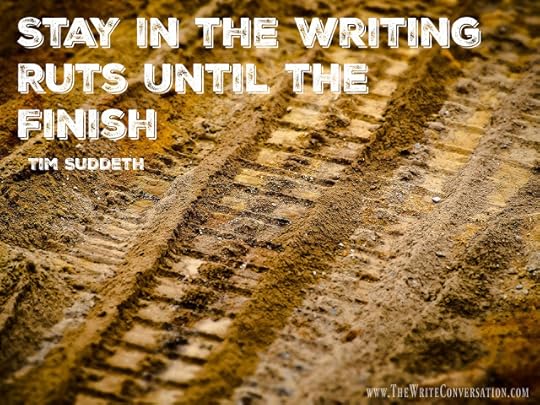
by Tim Suddeth @TimSuddeth
I have to admit that, for the last few weeks, writing has been a struggle for me. Which is strange because, like most of you, we’re having to quarantine because of the coronavirus? It’s not as if I have a lot of places to go or other things to do right now. You would think this would be the best time to focus and to write.Isn’t it funny how, when you have more time, it seems like there’s more to do?
Some of you who work outside of the house are getting your prayers answered for time to stay home.
However, you didn’t plan on your children’s schools being closed, too. Now you get the joy of, not only being a fulltime parent, but also, being a teacher. (What, you didn’t get an education degree when you became a parent?) And in many of our homes, it becomes a test of who needs teaching the most.
Others of you are spending more time with your spouses and you’re beginning to wonder, do you really want to retire early? Maybe we should put it off a while, years, maybe a decade?
No, having time isn’t my issue now. What I’m struggling with is trying to reset my current routine. For the last several months, I’ve been wearing my editor’s fedora as I rewrote/final edited two of my books. Now I want to put on my beanie with the propeller and begin working on a new first draft. Instead of looking at my writing with a critical eye, I want the freedom to explore and discover a whole new world, or at least a new story.
However, the gears in my brain are slipping big time. I have the focus of a golden retriever who was turned loose in a yard full of squirrels. Even laundry is jumping between me and the blank page. I’m constantly getting out of my seat to open the door to either let the dogs in, or to let them out, or to search for them throughout the house because it’s too quite. I can’t focus enough to get into the story. I forgot how to glue my seat to, uh hmm, the seat.
So, how can I get back into the writing routine?
Maybe, I shouldn’t try to go back to my old routine.
First, I need to realize that I’m not the writer I was when I began this writing journey, or even last wrote. Over the years, I’ve finished four books and no two of them were written the same way. Not even the two that are in a series and have many of the same characters. Since I started writing, I’ve learned more craft from experience and from taking classes and reading books on writing. I’ve tried things that failed and found new ways that worked better.
Second, my life isn’t the same. Even without going through a pandemic, life is constantly changing. Change isn’t bad, although it is often uncomfortable.
I spoke with my brother yesterday about how much he enjoyed working around their house with his new stepson who is a rising junior in high school. He won’t be around their house long and now is the time to make those fond memories and invest in the boy’s future.
Being quarantined with your family may make you want to scream at the walls or write to the governor for a pardon. But there will never be another time when you can be with your family the way you can now. Don’t miss what you have because you’re looking at what you’re missing.
Even if you do miss some of your writing time, accept that it is only for a season. As Cindy Sproles often says, give yourself some grace. Don’t be too hard on yourself.
Still, I’ve let my current routine turn into a rut and it’s hard to jump tracks to get back to writing. How can I get out of my rut and start a new routine?
I think the visual of ruts and tracks gives us some of the answers. If you’ve ever ridden a bike on a trail or seen the old wagon trails going west, you get the point. As long as you’re going in the same direction as everyone else, riding in the ruts are easy because the previous trips have worn down the road making the ride smoother. But when you try to turn out of the ruts and go your own way, you have to not only break through the walls other’s tires have made, you have to blaze a trail of your own.
Getting out of a rut will be hard, because you are so used to the habits you’ve made or falling into, you don’t even think about them. That’s why having a routine is so helpful. Like the bike path, the more you ride the new trail, the more established the path becomes. The more the new trail becomes established, the less effort it takes to ride on it.
When you settle into a new routine, a lot of the choices have already been made— where are you going to sit, how long will you work, when will you take breaks—so you can focus more on your work at hand.
But establishing a new routine does take time. It may take several laps to create the rut you want. Sometimes you have to stand and peddle harder. You may have to make some corrections. But the more you go back, the more progress you make.
One thing that is helping me is remembering I’ve been here before. Remembering starting past projects can work for you, too. Think back to when you started a tough project that you completed and how tough those first few days were. What helped you get through? Is it in your journal? Maybe you should record how you feel now so you’ll be prepared the next time you face a blank page.
Being difficult doesn’t mean it can’t be done. Just because that blank page sticks its tongue out and makes silly faces at you each morning, doesn’t mean you should give up and stop going back.
I plan to keep peddling. And I challenge you to keep on your project, too. Because, with a little effort, there is no limit to what you can make that blank page become.
TWEETABLEStay In the Writing Ruts Until the Finish - @TimSuddeth on @EdieMelson (Click to Tweet)
 Tim Suddeth is a stay-at-home dad and butler for his wonderful, adult son with autism. He has written numerous blogs posts, short stories, and three novels waiting for publication. He is a frequent attendee at writers’ conferences, including the Blue Ridge Mountain Christian Writers Conference and a member of Word Weavers and ACFW. He lives near Greenville, SC where he shares a house with a bossy Shorky and three too-curious Persians. You can find him on Facebook, Twitter, or at timingreenville.com.
Tim Suddeth is a stay-at-home dad and butler for his wonderful, adult son with autism. He has written numerous blogs posts, short stories, and three novels waiting for publication. He is a frequent attendee at writers’ conferences, including the Blue Ridge Mountain Christian Writers Conference and a member of Word Weavers and ACFW. He lives near Greenville, SC where he shares a house with a bossy Shorky and three too-curious Persians. You can find him on Facebook, Twitter, or at timingreenville.com.
Published on May 01, 2020 22:00
April 30, 2020
The Myth of Writer’s Block
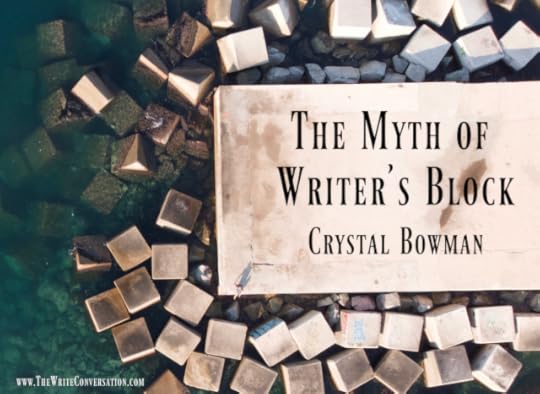
by Crystal Bowman
There’s no such thing as writer’s block. There—I said it because I believe it. I’m not sure who coined the term “writer’s block” but I’m guessing the person was not a true writer. Writers write no matter what. It’s our passion, our job, our mission, our talent. Call it what you want, but we write because we can’t not write. It’s what we do. Writing for us is like breathing—it keeps us alive.My husband is a dentist. Can you imagine if in the middle of a root canal he said, “I have dental block today. Send the patient home!” I doubt his dental practice would last long. Or imagine you need to go somewhere, and you encounter a roadblock. Do you turn around and go back home? No. You find another way to reach your destination.
Sometimes I write because I have an idea, and sometimes I write because I have a deadline. Either way, I can be just as creative and productive. There are times when the words flow quickly from my brain to the keyboard to the screen. Other times, not so much.
If you find yourself facing writing challenges, here are some ideas that may help when you feel stuck:Take a short break to give your brain a rest. Toss in a load of laundry, clean a bathroom, or go out to get the mail. These actions require little brain activity and allow you to refocus.Have a nutritious snack to refuel your brain. The ability to concentrate and problem solve requires a steady supply of energy in the form of glucose. Wholesome, slow-to-digest carbs are the best choice. Here are some suggestions:
trail mixyogurt parfaitwhole-grain cereal with milkapples with nut buttertea and avocado toastice cream (not really on the list, but I love ice cream)
Exercise. Go for a walk outdoors. If you can’t go out, then play your favorite music andmove your body from head to toe. You can also find a wide variety of in-home exercise programs on YouTube. If you prefer to keep writing, then skip over the section that’s challenging and come back to that part later. Sometimes moving forward triggers an idea that will help you fill in the previous blanks.Don’t rush. One time I wrote a picture book in three days because an editor slipped up and needed me to save her job. (Okay, she probably would not have been fired, but I did what she asked me to do). There are other times, however, when I have spent three days thinking about one sentence, one line, or even one word. Many of my children’s books are in rhythm and rhyme and I can spend days thinking about the rhyme because I want to get it right. That doesn’t mean I sit at my computer for three days trying to write one word—it just means that it’s on my mind. Expect the enemy to mess with you. When I am writing Bible stories or devotional books, I seem to have trouble at the very end. The last chapter, or paragraph, or verse just doesn’t come together. I believe it’s the enemy keeping me from completing my work. So I pray. I ask God to fill me with the Holy Spirit and then I tell Satan to take a hike. It’s hard to describe the peace I feel when I do this, but it always results in finishing my work.
During these days of global lockdown, you may find yourself with more time to write. Even if you don’t have an idea, turn on your computer and start writing. You may be surprised at what shows up on the screen. And remember—there’s no such thing as writer’s block!
TWEETABLEThe Myth of Writer's Block - tips from Crystal Bowman on @EdieMelson (Click to Tweet)
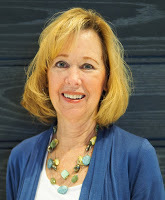 Crystal Bowman is an award-winning, bestselling author of more than 100 books for children and four nonfiction books for women. She also writes lyrics for children’s piano music and is a monthly contributor to Clubhouse Jr. Magazine. She loves going to schools to teach kids about poetry. She also speaks at MOPS (Mothers of Preschoolers) groups and teaches workshops at writers’ conferences. When she is not writing or speaking, she enjoys going for walks, working out at the gym, and eating ice cream. She and her husband live in Michigan and have seven huggable grandkids. www.crystalbowman.comwww.facebook.com/crystal.bowmanwww.facebook.com/crystaljbowmanwww.Instagram.com/crystalbowmanauthor
Crystal Bowman is an award-winning, bestselling author of more than 100 books for children and four nonfiction books for women. She also writes lyrics for children’s piano music and is a monthly contributor to Clubhouse Jr. Magazine. She loves going to schools to teach kids about poetry. She also speaks at MOPS (Mothers of Preschoolers) groups and teaches workshops at writers’ conferences. When she is not writing or speaking, she enjoys going for walks, working out at the gym, and eating ice cream. She and her husband live in Michigan and have seven huggable grandkids. www.crystalbowman.comwww.facebook.com/crystal.bowmanwww.facebook.com/crystaljbowmanwww.Instagram.com/crystalbowmanauthor
Published on April 30, 2020 22:00
April 29, 2020
Tips for Writing Time Slip Novels
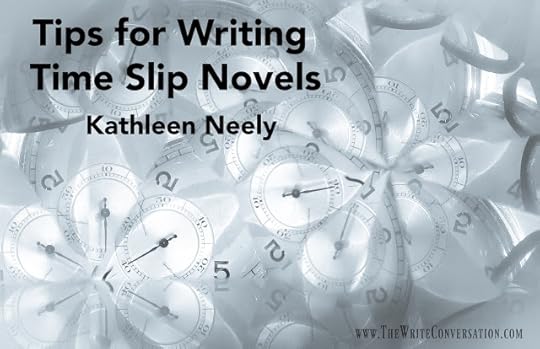
by Kathy Neely @NeelyKneely3628
My newly completed manuscript is my first in a new genre—a time-slip novel shifting between two timelines. One is an emotional journey through Civil War reconstruction, racial tensions, and coming of age characters, and the other is my familiar contemporary setting. As a writer, it proved to be a great learning experience. Time-slip is a common term, but I prefer to reference it as a dual timeline novel. The term ‘time-slip’ conjures up thoughts of time travel. Those are great novels, but they aren’t me. Read and analyze similar novels. What elements make them work? How do they cut through the reader’s confusion of jumping back and forth? Before beginning, I read a number of novels spanning timelines. They displayed various formats from single alternating chapters to larger selections before shifting back. During the process of examining other works, I found a new favored author in Susan Meissner. Lady in Waiting and A Fall of Marigolds firmed my decision to write my time-slip.
Expect to do double the research. Your two timeframes must each be distinct. They need to be true to their period, whether that is contemporary or historic. In my case, the contemporary research included the world of art, southern culture, and modeling. The historic required accuracy on post-Civil War reconstruction specific to the region of my setting.
Theme is of the highest importance. It’s the glue that will hold your novel together. A dual timeline is not two separate novels linked for the purpose of visiting history. When you think through various literary themes, you’ll discover they’re timeless.
Link the stories. In addition to theme, include other elements. This might be a vocation, an object, a commonality of plot—something that makes them worth pairing. In Meissner’s A Fall of Marigolds, it was a scarf. In Lady in Waiting, both had the same first name—Jane. These were in addition to plot elements. This component will probably be a catalyst for your contemporary protagonist to continue pursuing the historic facts.
Be careful of the language shift. Your characters will have very different voices. The author needs to reacclimate with each transition. I gave momentary thought to writing each one separately, then merging them. That didn’t work. Transitions are crucial. A good time-slip needs both stories to emerge together so transitions make sense.
Make strategic use of chapter endings. Those page-turners can hold more power. When your reader finishes a chapter with a cliff hanger, it may be three chapters away before returning to that time period. That burning desire to find out what happened can keep pages flying.
I hope my tips were helpful. I’d love to hear from writers who have stepped out of their place of comfort and tried something new.
TWEETABLETips for Writing Time Slip Novels - @NeelyKneely3628 on @EdieMelson (Click to Tweet)
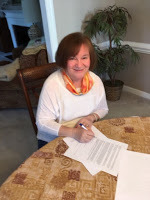 Kathleen Neely
resides in Greenville, SC with her husband, two cats, and one dog. She is a retired elementary principal, and enjoys time with family, visiting her two grandsons, traveling, and reading.
Kathleen Neely
resides in Greenville, SC with her husband, two cats, and one dog. She is a retired elementary principal, and enjoys time with family, visiting her two grandsons, traveling, and reading. She is the author of The Street Singer, released in February, 2019. Beauty for Ashes and The Least of These will be released in 2019. Kathleen won second place in a short story contest through ACFW-VA for her short story “The Missing Piece” and an honorable mention for her story “The Dance”. Both were published in a Christmas anthology. Her first novel, The Least of These, was awarded first place in the 2015 Fresh Voices contest through Almost an Author. She has numerous devotions published through Christian Devotions.
Kathleen continues to speak to students about writing and publication processes. She is a member of Association of Christian Fiction Writers.
Website– www.KathleenNeely.com Facebook– www.facebook.com/kathy.neely.98
Twitter- https://twitter.com/NeelyKneely3628
Published on April 29, 2020 22:00
April 28, 2020
The Hidden Gem of Time - Four Tips For Encouraging Glimmering Words

by Elizabeth Van Tassel @ElizVanTassel
Perhaps you’ve been nurturing a writing project for a long season. You’re hoping to get an agent or sell your story. Or you are trying to keep making progress amidst the current uncertainty we all are experiencing as the ripples from the Corona virus pandemic continue. I’m a gemologist, or expert about jewels, and saw some beautiful opals when I was traveling last year. They were rare pieces from Australia that glimmered in the light, surrounded by diamonds. I photographed this necklace since I write gem mysteries for middle graders and love to focus on beauty in my social media.
Right now, during the Corona virus pandemic, life can feel stagnant, or on hold, and at times very scary with loved ones either on the front lines or at risk. My problem has been “brain fog” after watching too much news. Determined to keep working after over two months on lockdown in California, I’ve fallen back on methods I honed after we survived a horrific loss years ago. I realized I need to keep pressing into my goals and dreams, and continue taking little steps, not unlike like how opals develop over time.
Opal forms when liquid slowly sifts through layers of silt-filled soils or animal remains. Miners have discovered opal-filled areas in Australia that are especially vibrant due to repeated exposure to erosion and water. The extreme conditions brought about just the right circumstance for opal to take shape in minerals or even fossilized animals, plants, and shells. Beauty emerged, quite literally, from murky soils or due to death and destruction.
When I first started writing my story, I was months into applying what I learned at my first big conference, and then tragedy struck. We awoke to flames outside our front door that had traveled twenty-five miles overnight in a huge series of wildfires. After grabbing our children and fleeing, others watched on national television as our home and dreams burned. Strangely enough, our home’s ruins were visited by famous actors and politicians and featured on every television station we watched for several months. We were left with the rubble to rebuild. In one day, we lost our home, our belongings, our community, our church, and our school since we had to move far away into temporary housing. That’s a lot of change. But persevering through that death sharpened my fiction and nonfiction writing. They were both much better. I could go—THERE—with my characters and with my reality.
More recently, it took a leap of faith to relocate once more to the Bay Area for my husband’s work. Moving set into sequence events that led to me getting a wonderful agent. I could see that all those little drips of water—those articles, speaking, TV work, those guest blogs, connecting with local writers, and honing my craft—everything you learn to do over time actually, very slowly, were working.
There’s a pithy saying: “Slow and steady wins the race.” It’s attributed to one of Aesop’s fables, the tortoise and hare’s race. We had a pet turtle when I was growing up because I was allergic to anything cute. While I’ve wanted the quick path and cheered on many friends with their writing success, I’ve also seen authors burn out and fail with life’s more important things.
So, don’t be discouraged if your path is slow and steady. There are hidden benefits perking beneath the surface, like the opal and its formation. While the world seems to be holding its breath, waiting to hit “start” as the pandemic eases its hold on us all, whatever you can accomplish will build something of lasting value. Perseverance, and even resilience to rise above your circumstances, will be honed and developed and help you in all of life’s areas.
Here are four tips to keep your approach fresh and your goals glimmering.
1. Problem: I’m not sure I’m writing the correct thing, or in the right genre.
Consider: Ensure you are writing in your “lane.”
Is this a calling for you—something you must do—or is it just a hobby? Are you in the right genre? You’ll know it if the topic keeps returning to you despite life interrupts and challenges. The real secret to knowing what you are called to write is to ask, “What must I do before I die?” I know that’s a serious question, but it really distills what’s important, like the sand does in making the shining opal.
2. Problem: I’ve had delays…life keeps bringing interrupts and I don’t know how to start over…. I have brain fog from the sad news on TV…More edits are needed, how do I remain energized about this project?
Consider: Is it time to show your work to a different audience?
Perhaps getting fresh thoughts from a qualified editor or writing partner would be a good idea. But you have to be willing to listen. And they have to enjoy the genre in which you are writing. I rewrote my book after an editor who lived in the country I was writing about discovered some plot holes I just couldn’t see. I didn’t view her critique as defeat, since she was very qualified. Instead, I tried what she suggested and it made all the difference.
Another idea is to attend an online conference, webinar, or join a supportive Facebook group in your genre so you have more feedback and training available. I’ve used NanNoWriMo, word count goals, daily bursts in writing groups, and the like to keep writing or diving into edits. Remember, opals form over a long time so keep pressing in to improve your work.
3. Problem: This agent -or- publisher is taking a really long time…
Consider: Perhaps your approach needs a fresh vision.
For finding an agent, try something different. Read the acknowledgements in books like yours to find new resources. Try a local retreat (once travel is open, or perhaps an online one now) instead of a big conference—or the other way around—do something different this year and see what happens to your writing.
Your general life may need re-organizing so you have more focus for the possibilities ahead. And keep building your network by doing all the “things” like writing articles, guest blogs, building online opportunities, finding a mentor relationship, and getting training.
4. Problem: I feel alone and unconnected. My friends keep getting awards and accolades, but where are mine?
Consider: Be proactive about building your network.
Again, ask for mentorship and partnership. Go to conferences, join writing network groups or dive more deeply into ones you’re already subscribed to and bring them a new project. Keep building your friendships and know that everyone is feeling a bit “off” from the current circumstances.
Another outlook could be paying it forward with friends by helping to promote their books coming out (they really need it during this pandemic and afterwards with no book tours or school visits!) Having that community will serve you well once you are published at long last!
Finally, remember to look outside of writing for inspiration – perhaps taking a walk, planting a garden, redoing a house project, painting, or learning to cook a new meal could revitalize your outlook.
Know that even if everyone can’t see it yet, with perseverance, your work can become a gem like the opal over time.
TWEETABLEThe Hidden Gem of Time - Four Tips For Encouraging Glimmering Words - @ElizVanTassel on @EdieMelson (Click to Tweet)
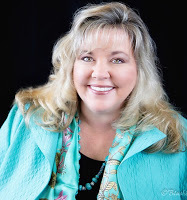 Elizabeth Van Tassel has lived with diamonds, wildfires, and miracles. The Graduate Gemologist and communication specialist writes middle grade fantasy adventures and encouraging nonfiction. She also pens articles for two tween blogs and magazines. From South Sea pearls to South American emeralds, her work in gemology and writing have brought exciting travels. But life is rarely all sparkle. In one night, her family lost their home, possessions, and community in a terrible wildfire. Determined to thrive, over time she developed an outlook that spots potential even in loss. Her creative eye and stories help audiences and readers rise above circumstances, finding hope and courage. Using her background in jewelry, ten years in corporate marketing and PR, and youth ministry, Elizabeth speaks and blogs for adults and kids on living a diamond-resilient life. Her products and interviews have appeared on CBS and Fox News, and she shares hope with moms, parents, teens, and women in both faith and corporate settings. You can find her at https://www.elizabethvantassel.com/.
Elizabeth Van Tassel has lived with diamonds, wildfires, and miracles. The Graduate Gemologist and communication specialist writes middle grade fantasy adventures and encouraging nonfiction. She also pens articles for two tween blogs and magazines. From South Sea pearls to South American emeralds, her work in gemology and writing have brought exciting travels. But life is rarely all sparkle. In one night, her family lost their home, possessions, and community in a terrible wildfire. Determined to thrive, over time she developed an outlook that spots potential even in loss. Her creative eye and stories help audiences and readers rise above circumstances, finding hope and courage. Using her background in jewelry, ten years in corporate marketing and PR, and youth ministry, Elizabeth speaks and blogs for adults and kids on living a diamond-resilient life. Her products and interviews have appeared on CBS and Fox News, and she shares hope with moms, parents, teens, and women in both faith and corporate settings. You can find her at https://www.elizabethvantassel.com/. Cover photo credits: Photo by Elizabeth Van Tassel at Van Balen Fine Jewelry in Hawaii.
Published on April 28, 2020 22:00



